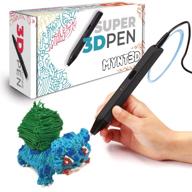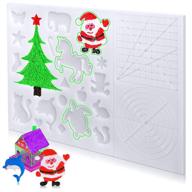
Review on Upgrade Your DIY Printing Game With HICTOP'S Auto Leveling Prusa I3 3D Printer Kit! by Omar Malvo

GREAT BUY! Well worth the $ and prints incredibly well! TIPS/REVIEW
First off, this is an excellent printer. I go into my local 3d printing shop and see all of the $1000+ printers there and see their prints next to them and say mine's better than that, better than that one, better than this one, etc. I've been very pleased with my purchase, I have had it for about 3-4 weeks and have printed all kinds of things, large things and small, and print jobs that were over 40 hours. The print bed size is very generous and you can print multiple parts right up to the edges with ease. The printer is very sturdy and the build was fairly easy to do for anyone who can follow instructions, which are very detailed with a few exceptions. So here are my recommendations after having built and used the printer extensively.Build:1. The "T" nuts that slide into the aluminum rails (called 20x20 extruded aluminum rails) are designed to twist on an angle and lock into place. I tried at first sliding them down the rail and quickly found out that most don't fit and realized I was doing it wrong and that you press them in parallel to the rail's groove. You do have to put in the bolt and twist lightly until you know the nut has rotated as opposed to being pulled up by the bolt, in which case you will know because of how it feels when it tightens. It will be tight very quickly and have no give, as opposed to when the nut has rotated to an angle and is gripping correctly. There were times with certain locations that I had problems getting the nut to rotate, so I had to check down the rail's groove with a light to make sure the nut had twisted 20-45 degrees from parallel to the groove.2. Pay attention to direction, I mounted the y-axis motor and bed opposite from where it was supposed to be. I ended up having to rotate the frame 180 degrees instead of flipping that and it was a pain. Easily avoidable.3. Get a caliper or ruler with mm on it, you will absolutely need one. A tape measure will work but is a but more difficult to work with.4. Where it asks you to make sure things are flush, make sure they are.5. Use the provided cord ribbon to wrap the cables from the print head, you don't need zip ties or anything else and run the cable over the top of the frame or mount the lcd slightly away from the left lead screw bracket to provide a little gap for the cable to sit. The pictures of the printer here show it installed like that but the instructions don't call for it.6. Auto Bed Leveling - This is a shortcoming in the documentation. Hictop does have a video on how to do leveling and there are some good videos on youtube that show you how to do it. Absolutely you will need to learn how to do this before you print. Basically you do an Auto Home procedure, see how far the print head is from the bed (or if it's on the bed), then you select Move Axis by 0.1mm increments on the Z-axis to lift the head up. You then unscrew the sensor's screws and pull it up on it's bracket until the red light is off, then push it down until the red just barely goes on. Then you tighten the screws back down, making the red light is still lit but that the sensor hasn't slipped down further. You want it to engage in the exact spot so that there is a gap enough for a sheet of paper to slide under the print nozzle. Oh, and yes, when you adjust on the z-axis (before moving the sensor), put it at a height to where a sheet of paper will just fit under with a tiny bit of resistance. After you have the z-sensor activating at the right height of a sheet of paper distance between the print head and the bed, disable the steppers (motors) and manually move the print head and bed to each of the corners and adjust the bed screws so that the print head is again at the same height, just high enough for a sheet of paper to slide under.7. Power switch - There is no power switch on the machine. You can introduce one and print a cover for the switch and the power cable, OR do what I did and buy a small power strip and plug it into that, using the power strip's switch to turn it on and off.8. X-axis rods - Use a level and manually adjust the hight of right or left x-axis bracket by twisting the lead screw so the top guide bar is level. If you don't, you will have to compensate on your bed, wondering why one side or corner requires you to raise the screw a LOT more than the others. I did this and it was because the x-axis rod wasn't level, the right bracket was essentially lower than the left one.9. Y-Axis belt mount - This is a very important one! My belt mount came unscrewed and fell off twice when I was printing. They have you put two nuts so that the second one locks the first one down. I didn't have them tight enough, then I tried lock washers and it still came unscrewed. Solution - I printed a new belt mount from Thingiverse that was beefier and gave more room for the belts to wrap back around, then I used two nuts again with LOCTITE. Absolutely do get some Loctite to lock those nuts into place, the blue kind, which is removeable. Hasn't budged since.10. The build is a bit time consuming because you have to assemble pretty much everything and the extruded aluminum with the t-nuts require a bit of meticulous focus. Probably took me 15+ hours, though I could definitely build one quicker now that I am familiar.OTHER CONSIDERATIONS / Upgrades1. While the print quality is (surprisingly?) good, I have an e3d Titan extruder and v6 hot end with micro-swiss nozzles ready to install to get even better prints. Requires printing a new bracket and firmware configuration changes.2. Firmware - I am not sure which version of Marlin they are using, but it does have the automatic bed leveling installed and is actually pretty good. I am still going to update to the latest to see what changes I get but the one it comes with isn't bad at all. A few gripes with it though. it doesn't save your settings into the EEPROM after powering off. The knob isn't calibrated correctly for pulses per stop, so it clicks but doesn't always move down one in the menu. This can be fixed in firmware.3. Software/Slicer - I have tried Cura, Repetier, and Simplify3D. While the first two are free and Cura is just fine, Simplify3D is amazing. Cura and Repetier are slicers. Repetier is also a print monitor, and like it, Simplify3D also does slicing and monitoring. S3D allows you to have per part print settings, so you can have two parts on the bed with different speeds, one with supports one without, different infills, etc.4. Print Adhesion - The tape they give you is crap and is really difficult to get your prints off of. If you are going to use tape, get blue painters tape (3M is really good). The green frog tape didn't work very well I found and I haven't used Kapton. Having said that, what you really want to get is a PEI sheet. They sell a 12x12" sheet on Best Buy for about $20, from a seller called Gizmodorks. This made all the difference in the world. I had constant problems with warping with ABS (considering there is no enclosure), especially on the corners. Once I put the PEI sheet on my bed, EVERYTHING sticks like none other, absolutely no warping at the bed with ABS, prints stick incredibly well, better than anything else I tried for adhesive/tape combos. This is IMO the only required upgrade that you need. PLA will print just fine without it, but ABS, PC-ABS, and others that require a high bed temp will cause issues with larger objects. BTW, ABS prints and looks beautiful, the walls are completely clean layers are barely detectable.5. Settings/Printing Tips - I have been printing PLA at 200-210 with 60 degrees on the bed. If you are using blue painters tape, a brim is useful for adhesion. Strong hair spray on top of that will make it stick incredibly well. ABS I run at 230/110. PETG at 230/60. PC-ABS at 270/115 (you have to up the max temp in firmware or set the temp in the slicer, because 260 is normally the limit though it will easily go higher. 280 would probably be the max you would want to print at). 200 microns looks good enough for most things and is a great trade-off for quality/speed. I usually print at 60 or 80mm/s, with underspeeds of 60-80% for first/last layers and for outlines (settings in Simplify3D so it prints 60-80% of your set print speed, so for example, if set at 60 mm/s at 80% underspeed, your bottom layer will print at 48mm/s). If you are getting waviness in the outer walls, try lowering the accelleration and XYJerk setting in the LCD menu from 3000/20 to 1000/15. It will slow the print down a tiny bit but seemed to have a really good effect.6. Marlin firmware - to upgrade the firmware you need to get the firmware from the manufacturer and save it. Write down all your settings from the LCD menus. Then update the configuration.h file in the new version of Marlin to match what is in the configuration.h in the current version. Hictop will email you the firmware if you ask. I emailed them when it was night time in China and got a response their next morning.In conclusion, I have no problem in whole-heartedly recommending this printer. Features for the money is great! Feel free to follow up with questions and I can try to answer.
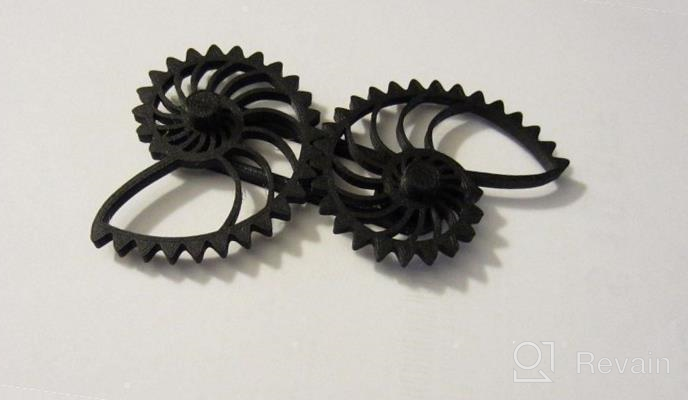
- Industrial & Scientific
- Limited printing volume: The HICTOP printer has a relatively smaller printing volume compared to other 3D printers in its price range
New products
Comments (0)
Similar reviews
Top products in 🖨️ 3D Printers
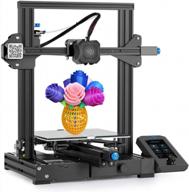
High-Precision And Stable Creality Ender 3 V2 3D Printer With New UI, Silent Mainboard, Effortless Filament Feed-In, XY-Axis Tensioner, Resume Printing, And Large Build Volume Of 220×220×250Mm

11 Review
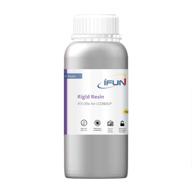
UV Curing Standard Photopolymer Printer by IFUN

5 Review
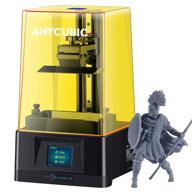
🖨️ ANYCUBIC Assembled Innovation Off Line Printing: Streamline Your Printing Process with Cutting-Edge Technology

5 Review
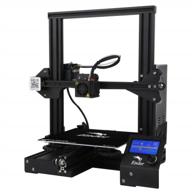
Economic Ender 3D Printer DIY Kit With Resume Printing Function, Large Printable Area Of 220X220X250MM By Creality 3D

18 Review





